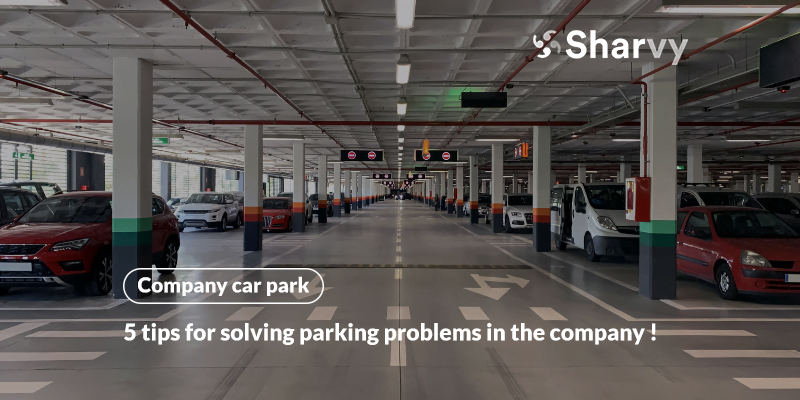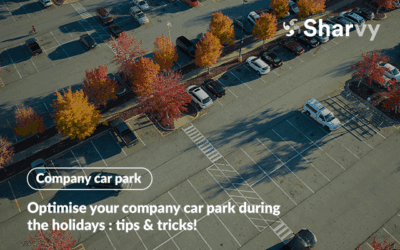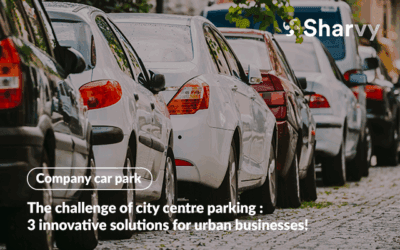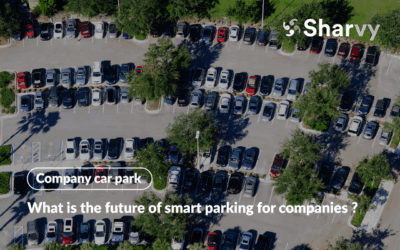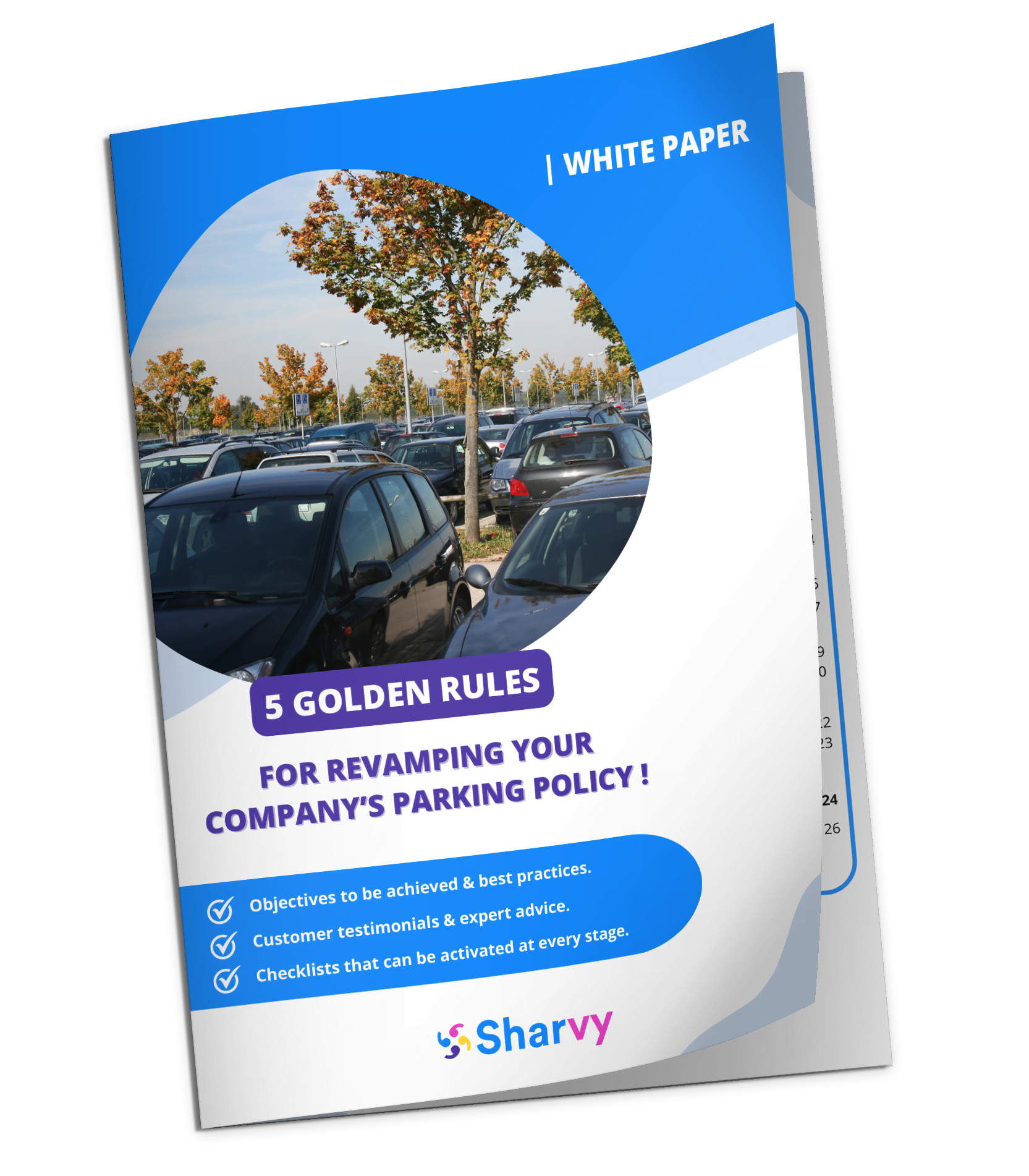At the heart of the organisational fabric, the issue of parking in company car parks is an inescapable challenge, giving rise to many and varied concerns. Judicious management of these often limited spaces is a crucial issue for employers concerned about the well-being and satisfaction of their staff.
In this article, we take a close look at the problems inherent in company car parks and provide sound advice for employers who want to find efficient solutions. The ultimate aim is to strike a harmonious balance between the supply of parking and the growing demand, while optimising employees’ experience of their workplace.
How can you limit parking problems in the workplace? 5 quick and easy tips!
The subject of company parking can quickly become an irritant for employees. Every morning, they can spend considerable time looking for a parking space. But minutes are precious, especially if they have to be at a meeting. All it takes is a few minutes in traffic jams, coupled with the time it takes to find a parking space, and you’re running late! This daily stress and anxiety is never a good start to the day.
Moreover, it could be a more pleasant task for the person organizing it. It’s a high cost for the company, which has to mobilize one or more employees to manage it and allocate a budget for its upkeep and safety. Therefore, the company’s objective is to optimize parking as much as possible to avoid having unoccupied spaces or, conversely, a car park that is always full, unsafe parking, etc.
To limit parking problems as much as possible, here is a list of 5 quick and easy tips to put in place.
1. Reduce the number of named spaces
In a company car park, parking problems are often the result of the volume of spaces allocated to a particular employee. Usually, persons from the management will have a named space. However, with travel, telecommuting or holidays, they will not be in the office every day. Their space will therefore remain unoccupied and unused by other people on the pretext that it is nominative and reserved for a specific person.
The aim is therefore to have as few nominative spaces as possible to avoid this type of problem. Or to set up a tool that allows a space holder to easily communicate to other employees the days when they can park in his or her space. In this way, parking becomes a shared asset within the company, and no longer an exclusive asset for certain privileged people. So, it improves well-being at work.
2. Modernise car park access control
In the majority of companies, access to the car park is via a personal badge system, or even freely without any barriers. However, this is not optimal and can lead to many parking problems: unauthorised people parking in the car park, loss or exchange of personal badges, etc.
Many innovative solutions exist to modernise access control and avoid the above problems. The first is the plate recognition camera. It allows the opening of the barrier only for vehicles registered beforehand. At Sharvy, we offer a second solution : a button in our application to allow the opening of the barrier to people who have reserved a place on the day.
3. Encourage carpooling between employees and other alternative forms of mobility
Today, soft and alternative forms of mobility are growing in popularity. Towns and cities themselves are encouraging them by creating numerous cycle lanes, or lanes reserved for public transport and car-sharing. When you add to this the rise in petrol prices, it often makes sense to opt for a sustainable means of transport : cycling, public transport, car-sharing, etc. At the same time, for companies, the challenge of encouraging this type of mobility is twofold! For example, to positively impact the environment, and to relieve congestion in the car park (and therefore reduce parking problems).
Companies can subscribe to dedicated solutions such as Karos to encourage home-work car-sharing. This application puts employees from the same company in touch with each other if they are making a similar journey. At the same time, using smart parking is an essential link for employers wishing to improve their CSR policy.
Download our White Paper and discover all our tips for optimizing your company car park in this respect!
4. Rent additional spaces in a neighbouring car park
If the above 3 solutions are not sufficient, the company can opt to rent spaces in a neighbouring car park. This allows for an easy increase in parking capacity. However, this option has a cost. On average, in large cities, renting a space costs between €1,500 and €2,000 per year. The overall budget can therefore very quickly reach tens of thousands of euros.
This is not the most economical option, but it does provide a quick solution to the problem of having too few parking spaces. More spaces mean fewer parking problems and therefore less frustration for the employee, who will find it easier to park.
For example, via the platform, holders of a place can declare it as available on days when they are absent. Other employees can also reserve a spot on days when they need one.
The algorithm then distributes the available spaces according to priority rules. As a result, on the day, thanks to digital access control, only people with a reservation can access and park in the car park. This limits parking problems since all vehicles entering the car park have an allocated space.
5. Opt for a company parking management software
The most optimal option to avoid parking problems and optimise your parking is to use a dedicated solution. Corporate parking management applications such as Sharvy make it easy to implement the 3 tips given above. The occupation of the spaces is thus optimised and parking problems are greatly limited.
In conclusion
In the final analysis, managing company car parks is a complex challenge, fraught with a variety of problems – but not insurmountable ones! Highlighting the difficulties inherent in these parking spaces helps us to understand the issues facing both companies and their employees.
However, it is comforting to note that solutions do exist to alleviate these problems. From the advance reservation of parking spaces to the adoption of a parking management solution and the introduction of rotation policies, each approach is part of a proactive approach aimed at reconciling growing demand with the scarcity of resources.
As well as providing pragmatic solutions to these problems, these solutions also paint a picture of companies that care about the well-being of their employees and are keen to maximise operational efficiency, while creating a climate that is conducive to productivity.
Have a question? Check out the FAQ!
How can parking issues related to reserved spaces be reduced?
To reduce parking issues caused by reserved spaces, it is advisable to minimise the number of reserved spaces and encourage collaborative management. An effective solution is to use a tool that allows space holders to declare their absence and release their space for other employees. A dedicated application facilitates this management by centralising declarations and automatically allocating available spaces, optimising parking occupancy and reducing frustrations.
What measures can be taken to modernise access control to the company car park?
To modernise access control to the car park, it is recommended to adopt innovative solutions such as licence plate recognition cameras. These systems allow automatic barrier opening only for registered vehicles, thereby increasing security and efficiency. Another option is to use mobile applications, like Sharvy, which enable employees to reserve a space in advance and open the barrier via the app, ensuring controlled and secure access to the car park.
How can a company effectively manage parking spaces to avoid frustration among drivers?
An effective management of parking spaces in a company can be achieved through several actions. First, limiting the number of assigned parking spots helps optimize the use of available spaces, thus preventing unused spots. Additionally, implementing a reservation system via a mobile app allows drivers to know in advance if they have a parking spot, reducing the stress associated with searching for parking. Moreover, promoting reduced mobility solutions and carpooling can also help alleviate congestion in parking areas and improve the overall experience for employees.
Want to learn more? Check out our latest articles!
Optimise your company car park during the holidays : tips & tricks!
How can you reinvent your company car park management during the holidays? What solutions and tips can you come up with? Focus!
The challenge of city centre parking : 3 innovative solutions for urban businesses!
Urban businesses : what solutions can be found to meet the challenge of city centre parking? Our advice and tips in this article!
What is the future of smart parking for companies ?
What is smart parking for companies? What trends will shape the future? And why? All the answers in this article!
Subscribe to our newsletter!
Resources
Contact us
+44 117 463 6990

